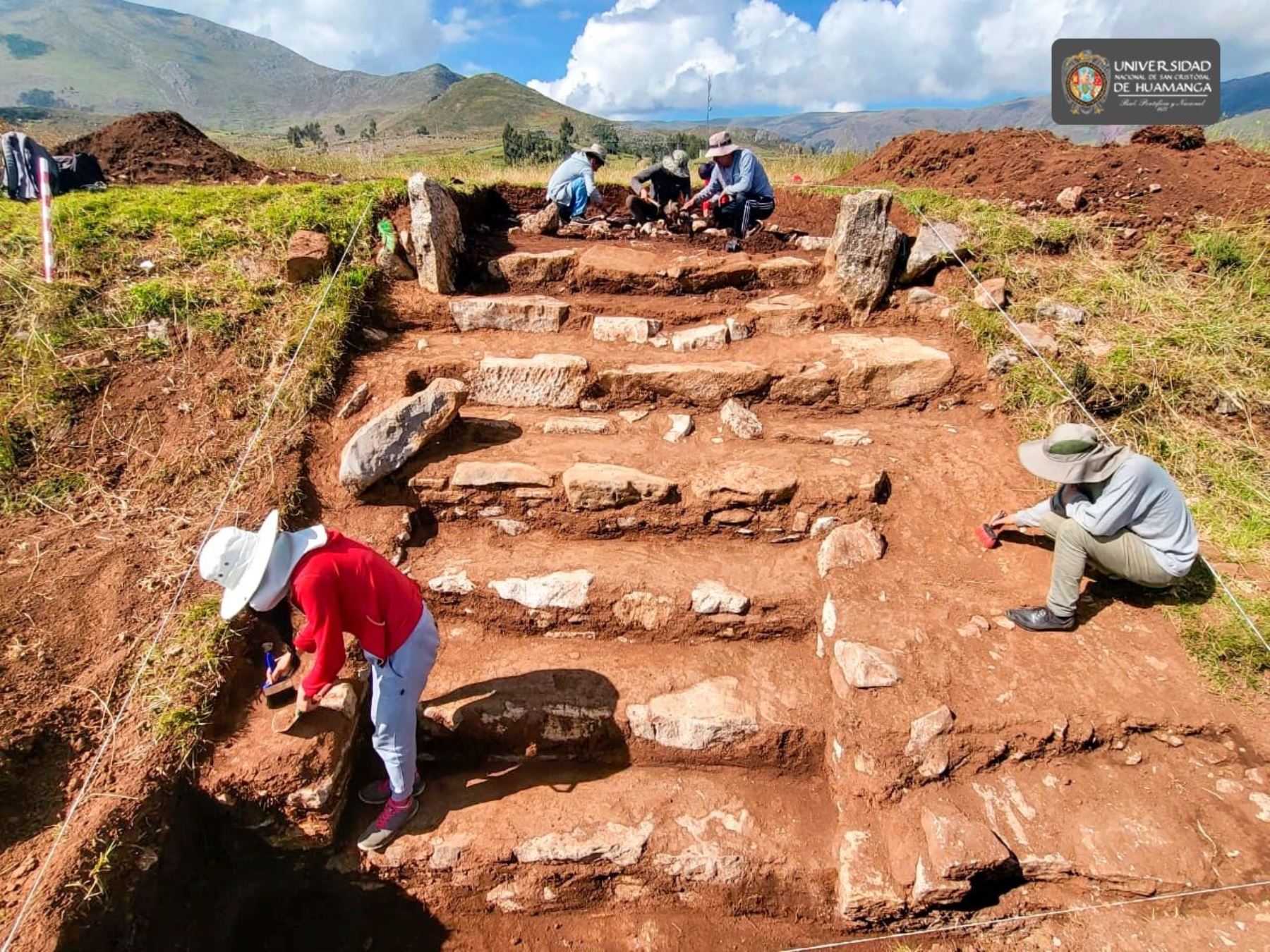
ANDAHUAYLAS (Apurimac region, Peru), April 24 (NNN-ANDINA) — A team of researchers, led by archaeologist Edison Mendoza, discovered a 3,000-year-old ceremonial center from the Formative Stage in the population center of San Juan Bautista, located in the district of San Antonio de Cachi, Andahuaylas province, Apurimac region.
The ceremonial center, called Markayuq, is a 31 x 31 meter squared platform with an approximated height of four meters, which includes an entrance at the northern side. A seven-step staircase was also found in this place.
In statements with Andina news agency, Mendoza indicated that the ceremonial center was erected at the top of the Markayuq plateau, over an artificial elevated platform, and is facing the apus or tutelary deities of Apurimac region.
After noting that a rectangular sunken court was found inside the ceremonial center, the Ayacucho-born archaeologist affirmed that, given its characteristics, it can be concluded that the site was used for ritual activities.
“This was a ceremonial center. A wide horizon can be seen from this place,” he remarked.
The researcher stated that the archaeological site is located in the Pampas River basin, where there are other important archaeological complexes.
Mendoza, who is also a professor at the Archaeology and History School of the San Cristobal de Huamanga University (UNSCH) in Ayacucho, underscored that the ceremonial center’s location is strategic because it crosses a long bridle path, which is directly connected to the Cachi mine —a salt deposit that has been exploited from pre-Hispanic times to date.
“It is currently the largest solid salt mine across the territory of Andahuaylas and Vilcashuaman,” he said.
The presence of the Markayuq platform in Apurimac reinforces the populations’ social complexity. For 3,000 years, many people have visited the salt mine for salt extraction and distribution. Salt was a basic ingredient of Andean meals and was used for textile dyeing. — NNN-ANDINA






